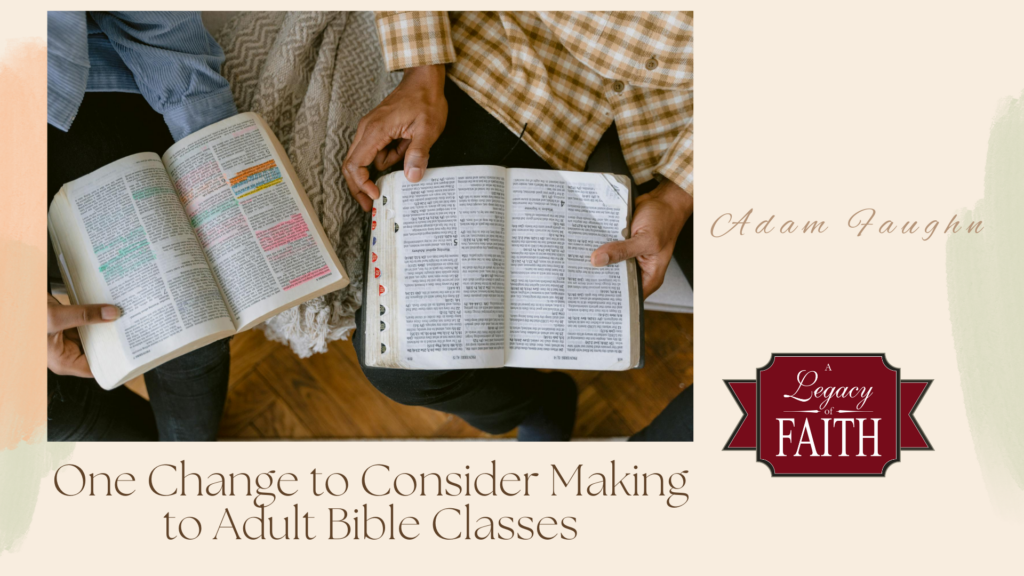One Change to Consider Making to Adult Bible Classes
I am deeply appreciative of the elders at Central for many reasons. One of those reasons is that there is regular conversation about the Bible school program. In far too many congregations, the Bible school is handled with a “set it and forget it” mindset, but I am grateful that, at Central, there is ongoing discussion of how things should go.
And that includes the adult Bible classes.
In far too many congregations, adult classes default to one of two common ways of doing things. Either (1) they use a printed curriculum and basically just read the lesson aloud and fill in the blanks, or (2) they go verse-by-verse-by-verse-by-verse through whatever book they are in.
Now, before continuing, let me say that both of these approaches have at least some value.
- I am certainly not against printed curriculum. Some of it is quite good. However, if you read the instructions to these materials, they will tell you that they are meant to be a guide. They are not meant to just be read aloud and filled in. They are meant to aid the teacher in working through a text or topic.
- I teach verse-by-verse at times also. In fact, I like to do that. It makes certain an entire context is discussed and it “forces” the teacher to not skip more difficult or controversial texts.
However, to constantly (or even always) to default to these two methods can stifle the overall growth of the students. To work against that, consider making this one change sometimes: add variety to the approach of the classes.
For example, instead of studying John verse-by-verse again, why not just survey it once? Or why not only study the seven signs once? Or why not study only the “I am” statements once?
For some people, that sounds almost like heresy. After all, that’s not getting the whole book. Isn’t that terrible?
No, and let me give you one major reason why: adults will be in classes for decades, so you have plenty of opportunity to teach the same text using a different approach in the future. Remember: once a person graduates high school, they are in some type of adult class. Maybe you have a college class or a young professionals class. But they are in the “adult” department, and they will be in that department for the rest of their lives. If they live to, say, 80, that means they will spend about 62 years in adult Bible classes. So there is plenty of time to go through various texts and topics and to do so from a variety of approaches.
HERE’S THE HANGUP: THIS TAKES PLANNING
Of course, this takes planning and it also takes the leadership being on board, but it is such a blessing when a congregation teaches the whole counsel, yes, but also does so in a variety of ways, so that students see the same text from various angles and approaches.
What if your leadership sat down over the course of a few weeks (or even months) and tried to lay down the subjects and texts they would like to study for just the next two years? Now, can you go back through that list and talk about how to approach those? Of course! Some will need to be basically verse-by-verse. Some might well need the aid of a printed curriculum. But others might only need a survey or a topical approach. (NOTE: at Central, we have our adult classes, at least in rough form, through the summer of 2028, and we try to stay at least two years ahead at all times.)
But by planning in advance, you don’t default to the usual way of doing things. You also begin to see if you are being balanced (Old and New Testament, textual and topical, etc.).
It take a lot of work, but the Bible school program is far better for it.
AUTHOR: Adam Faughn
